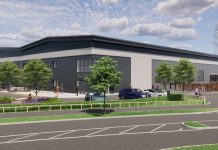Banks of the future need to fundamentally change the size, shape and location of their property portfolios in order to adapt to the challenges of talent retention, technology, geography, cost pressures and increased regulation, according to a report published by DTZ.
The report, carried out in conjunction with consultancy Unwork, is the culmination of more than 100 interviews with senior figures in the banking, property and HR industry and makes predictions on some of the potentially seismic changes which will take place in the sector in the coming years.
The global financial crisis has been a wake-up call to the banking industry which had largely ignored workplace environments and property due to the certainty of large profits and consequent salaries and bonuses. Increased costs and regulation coupled with reduced profit margins have resulted in cut-backs as well as a new approach to property portfolios and workspace.
Talent and technology are two of the major driving forces behind predicted changes made within the report. More than 50% of employees are now engaged in IT and technology-related roles. This means banks are now not only competing with other financial institutions for staff but with the likes of Google and Microsoft, companies that have spent the past decade investing heavily in creatively appealing workspaces to attract talent. With employees listing workspace followed by salary as their top priorities in any job, banks are losing their traditional place as employers of choice and will have to work harder to attract new staff.
In order to meet these challenges in an open era, banks will start to invest significantly in their workplaces and work technology, offering better environments and more flexibility in the same way the other industries have done in the past 10 years. There will be widespread introduction of agile working, and an increase in the ability to operate away from the office for most functions.
Footfall in retail branches will continue to fall at dramatic rates, forcing banks to respond with a whole new model of retail banking. Retail banking’s saviour will be customer interaction, and as banking goes digital the physical space will need a new raison d’être. This will lead to more consumer-focused branch designs, where customers can socialise, drink coffee and work as well as bank. The report also predicts the rise of a hub and spoke location model, in which only city-centre branches will offer full services with a network of kiosks and pop-ups to replace the suburban branches.
From a head office perspective, banks will consider moving out of traditional Central Business Districts (CBDs) and locating core functions in mixed used, vibrant, connected urban environments (CUEs). They will consider moving towards the ‘horizontal high-rise’, out of their traditional CBD environments, into places offering convenient access to retail and high quality restaurant offerings. In these locations, the Banks and similar financial institutions will be able to attract the best talent in the future. Simultaneously, they can continue to occupy statement buildings, maintaining the ‘building as the brand’ tradition.
Andy Heath, Director, Office agency at DTZ in Bristol commented: “A lot of the points raised in this report are very relevant to Bristol which in comparison to the other core cities in the UK has a very young, highly qualified workforce – a little known fact is that Bristol has the highest retention of its graduates than any other UK city – who want to work in dynamic companies. There are major companies in the city such as Ovo Energy who are responding to these demographics and creating ‘googlesque’ places of work which challenge the old methods of one desk per person, enclosed meeting rooms and a kettle. It is vitally important that businesses imprint their identity on their offices and don’t let the offices dictate their identity and the way they should work.
“In such an attractive environment as Bristol, with parks and waterways throughout the city centre and the highest ratio of cycling commuters per head, it is also becoming essential that in building design we incorporate high levels of bike racks per worker – approximately 1 per 10 but we are acting for occupiers who demand up to 1 per 3 – and showers – on average we are advising 1 per circa 35 workers – to cope with the cyclists and the running clubs that the more sustainable, CSR led business’ are providing.
“With the pending electrification of train lines and the quicker journey times to London, the anticipated growth of the Enterprise Zone and the quality of life that Bristol can offer, Bristol is attracting interest from major national and global industries as a place where they can source the highly trained workforce and where their existing workforce would happily relocate to. Our current challenge is providing the accommodation for them.”























